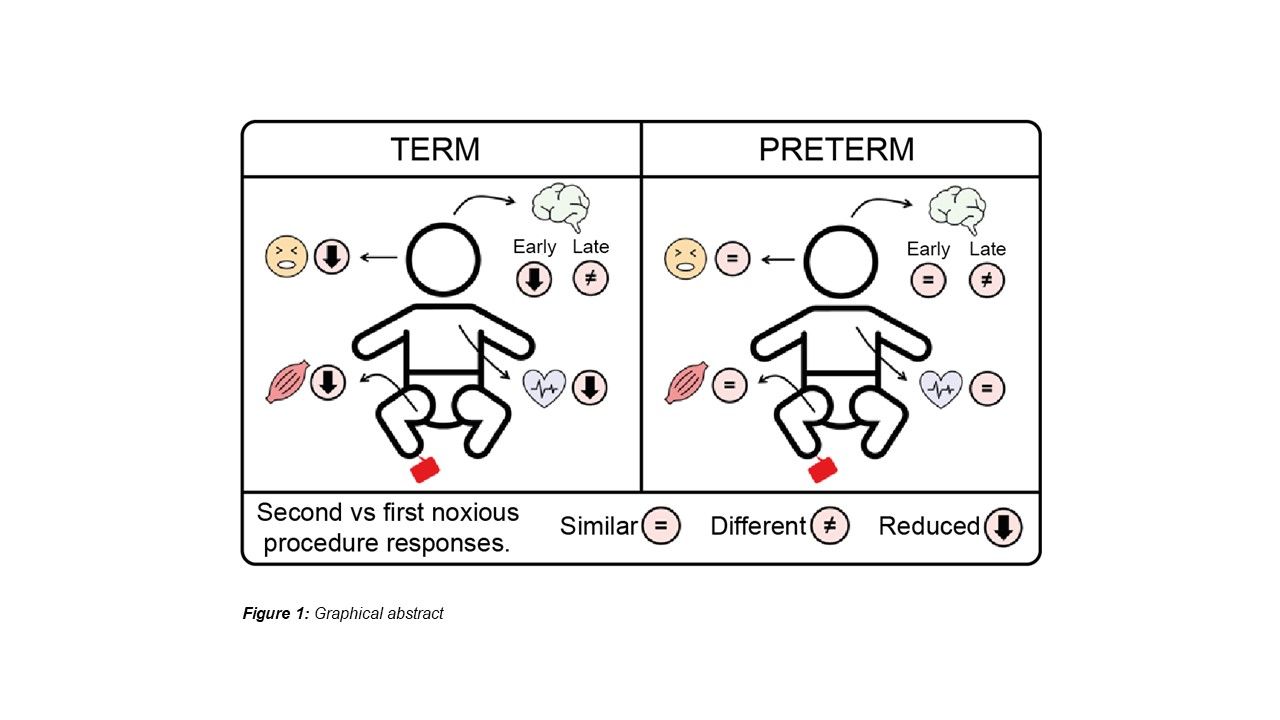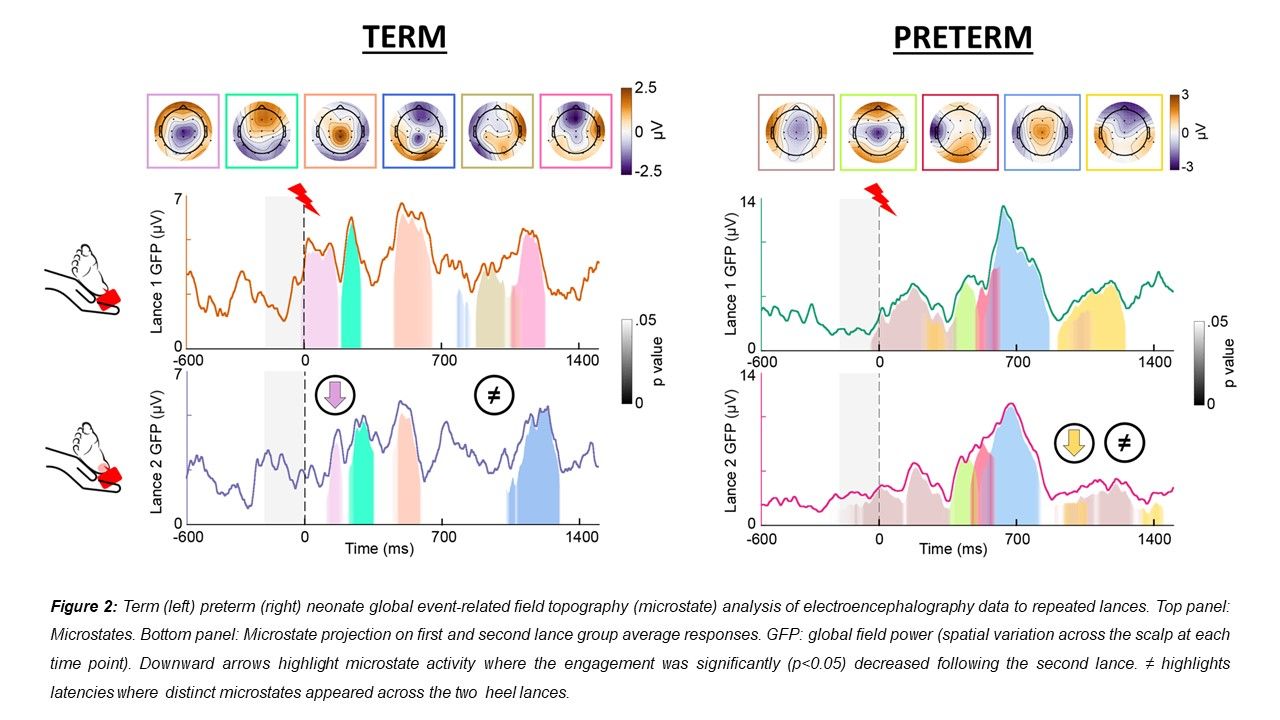Pain habituation is an important physiological and psychological adaptation to recurrent or sustained noxious stimuli and is likely to preserve physical, emotional, and cognitive resources when the threat is unavoidable or if the stimulus is not life-threatening (De Paepe et al., 2019). This adaptive learning evolves over the lifespan as the brain develops in conjunction with exposure to a wide range of sensory experiences. However, at what stage in human development such habituation emerges is unknown.
Twenty-one human infants (10 preterm: median 34 completed postmenstrual weeks, 5 females; 11 term: median 39 completed postmenstrual weeks, 4 females) underwent two clinically-required blood tests (heel lances) in brief succession (median 7.5 minutes apart), on the same heel skin area due to an unsuccessful first attempt. We recorded brain electrical activity at the scalp (electroencephalography), flexion withdrawal reflex (electromyography), heart rate changes (electrocardiography) and facial expressions (video) time-locked to each lance procedure. Ethical approval was obtained from the NHS Research Ethics Committee, with informed written parental consent obtained prior to each study. Scalp-level cortical responses to the two stimuli were studied using an advanced global event-related field topography (microstate) analysis technique. This method identifies unique stimulus-related topographies, with their latency, extent of activation, and cycling behaviour post-stimulus, reflecting ongoing changes in the engaged network configuration of active cerebral sources (Michel & Murray, 2012). Our analysis determined a set of six and five microstates as optimal models for term and preterm infants respectively, given that they explained over 85% of the post-stimulus global scalp potential response.
Our results show that in both term and preterm groups, a common initial sequence of microstates (0-700/900 ms respectively) were engaged following both lances. Following a second lance there was no significant difference in the engagement of any of these microstates in this initial sequence, or accompanying physiological responses, in preterm infants. In contrast, there was a significant reduction in the engagement of the earliest microstate in term infants (p=0.016) following the second lance, which was accompanied by decreases in their flexion withdrawal reflex changes (p<0.001), heart rate changes (p=0.022) and facial expression scores (p=0.002). In the late part of the response, both age groups displayed distinct dominant microstates for first and second lance, suggesting that higher-level cortical processing is possible in preterm neonates, but is refined in developmentally mature term neonates.
Term neonates display habituation to repeated noxious stimulation as measured by cortical activation and by physiological responses and reflexive behaviours. The decreased short-latency cortical response suggests neonatal learning from the first noxious stimulation driving adaptions that reduce cortical processing of stimulus components common to repeated noxious events (Seymour & Mancini, 2020), thus potentially limiting energy wastage in favour of other goals. This was followed by distinct high-level processing of contextual factors unique to each stimulus. The failure of the preterm brain to habituate and thus adapt to repeated pain during a critical developmental period where high-level cortical processing networks are being established emphasises the vulnerability of preterm infants to repeated noxious stimulation.
Sensory Signals (The Royal College of Physicians, London, UK) (2022) Proc Physiol Soc 50, C09
Oral Communications: Cortical microstate analysis reveals central nervous system modulation of responses to repeated noxious procedures in hospitalised human neonates.
Mohammed Rupawala1, Oana Bucsea2, Maria Pureza Laudiano-Dray1, Kimberley Whitehead1, Judith Meek1, 3, Maria Fitzgerald1, Sofia Olhede1, 4, Laura Jones1, Lorenzo Fabrizi1
1University College London, London, United Kingdom 2York University, Toronto, Ontario, Canada 3University College London Hospitals, London, United Kingdom 4Ecole Polytechnique Federale de Lausanne, Lausanne, Switzerland
View other abstracts by:
Where applicable, experiments conform with Society ethical requirements.


